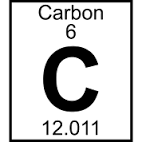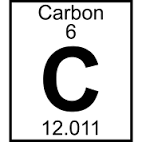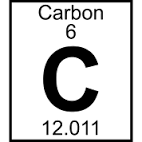![]()
![]()
![]()
Use LEFT and RIGHT arrow keys to navigate between flashcards;
Use UP and DOWN arrow keys to flip the card;
H to show hint;
A reads text to speech;
28 Cards in this Set
- Front
- Back

What is the Atomic Number? |
6 |
|

What is the atomic mass? |
12.011g |
|

What is the chemical symbol and name? |
C, Carbon |
|
|
What subatomic particle has the mass of 1.67262x10^(-27)kg or 1.0073 amu? |
Proton |
|
|
What subatomic particle has the mass of 1.67493x10^(-27)kg or 1.0087 amu? |
Neutron |
|
|
What subatomic particle has the mass of 0.00091x10^(-27)kg or 0.00055 amu? |
Electron |
|
|
He, Ne, Ar, Kr, Xe, & Rn are all classified as: |
Noble Gases |
|
|
Be, Mg, Ca, Sr, Ba, & Ra are all classified as: |
Alkaline Earth Metals |
|
|
Number of protons - Number of Electrons = |
Ion Charge |
|
|
What is the smallest identifiable unit of an element? |
Atom |
|
|
What is a substance that cannot be broken down into simpler substances? |
Element |
|
|
What theory was described by: - Elements are composed of tiny particles = atoms - All atoms of a given element have the same mass and other properties - Atoms combine in simple, whole-number ratios to make compounds |
Dalton's Atomic Theory |
|
|
What model did Thomson form from the discovery that: |
Plum Pudding Model |
|
|
What model/theory did Rutherford form from his gold foil experiment? |
Nuclear Theory |
|
|
The nucleus of an atom consists of: |
Protons and Neutrons |
|
|
What part of an atom makes up 99.9% of the atom, but occupies the least space? |
Nucleus |
|
|
What group of elements: - Occupy the left of the periodic table - Are heat and electrical conductors - Malleable (made flat) - Ductile (stretched in to wires) - Lustrous (shiny) - Lose electrons in chemical changes |
Metals |
|
|
What group of elements: - Occupy the upper right of the periodic table - Have varied properties (solids or gases at room temp) - Poor conductors - Gain electrons in chemical changes |
Nonmetals |
|
|
What group of elements: - Occupy the middle between metals and nonmetals - Semiconductors - Often used in manufacturing electronic devices |
Metalloids |
|
|
Positive Ions are called |
Cations |
|
|
Negative Ions are called |
Anions |
|
|
Where is the charge of an Ion shown with regard to it's elemental symbol? |
Upper Right |
|
|
On the periodic table, the number with the "A" above the column indicates: |
Valence Electrons |
|
|
Atoms with the same number of protons, but a different number of neutrons are called: |
Isotopes |
|
|
Isotopes are symbolized by what to the left of the Chemical Symbol? |
#Neutrons |
|
|
Atomic mass= |
(Fraction of isotope 1 * Mass of Isotope 1) + (Fraction of isotope 3 * Mass of Isotope 3) + |
|
|
Unstable isotopes that emit energetic subatomic particles are considered to be: |
Radioactive |
|
|
What is the term for the subatomic particles released by unstable isotopes? |
Nuclear Radiation |

